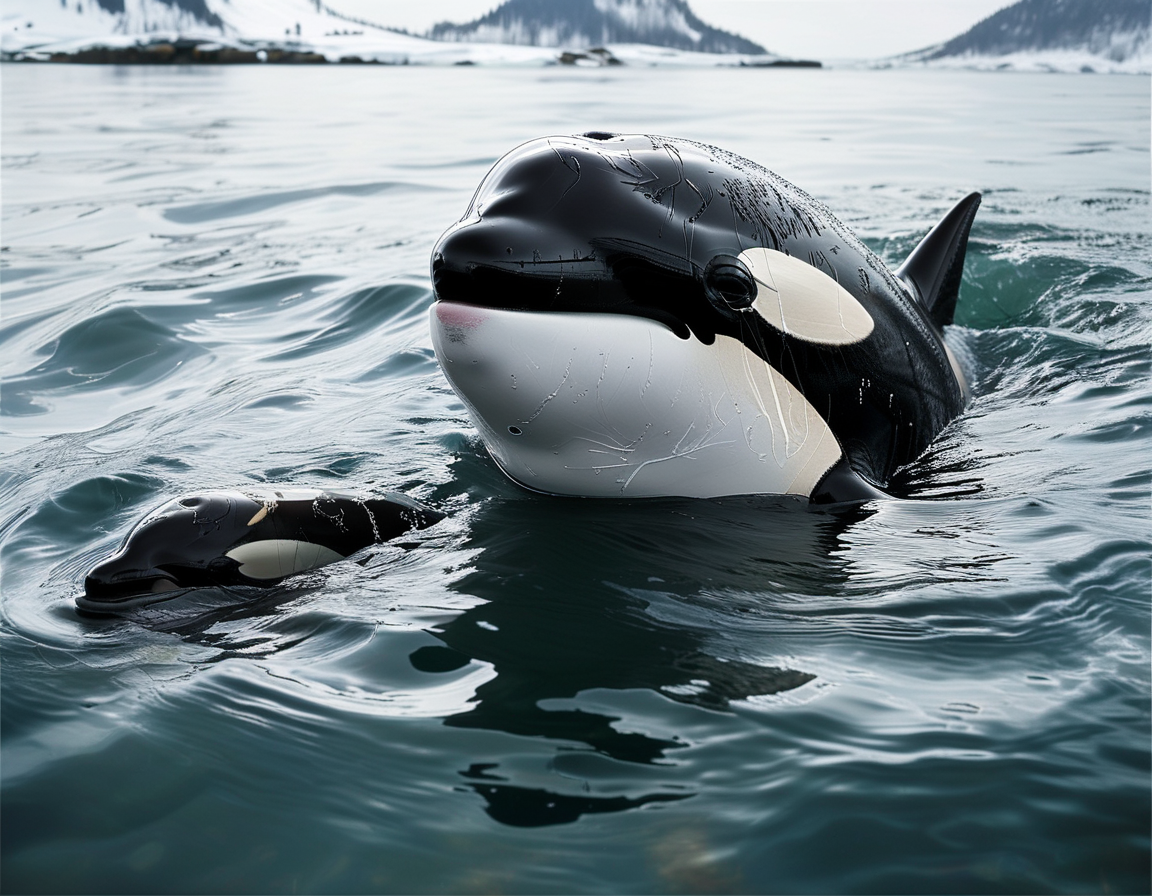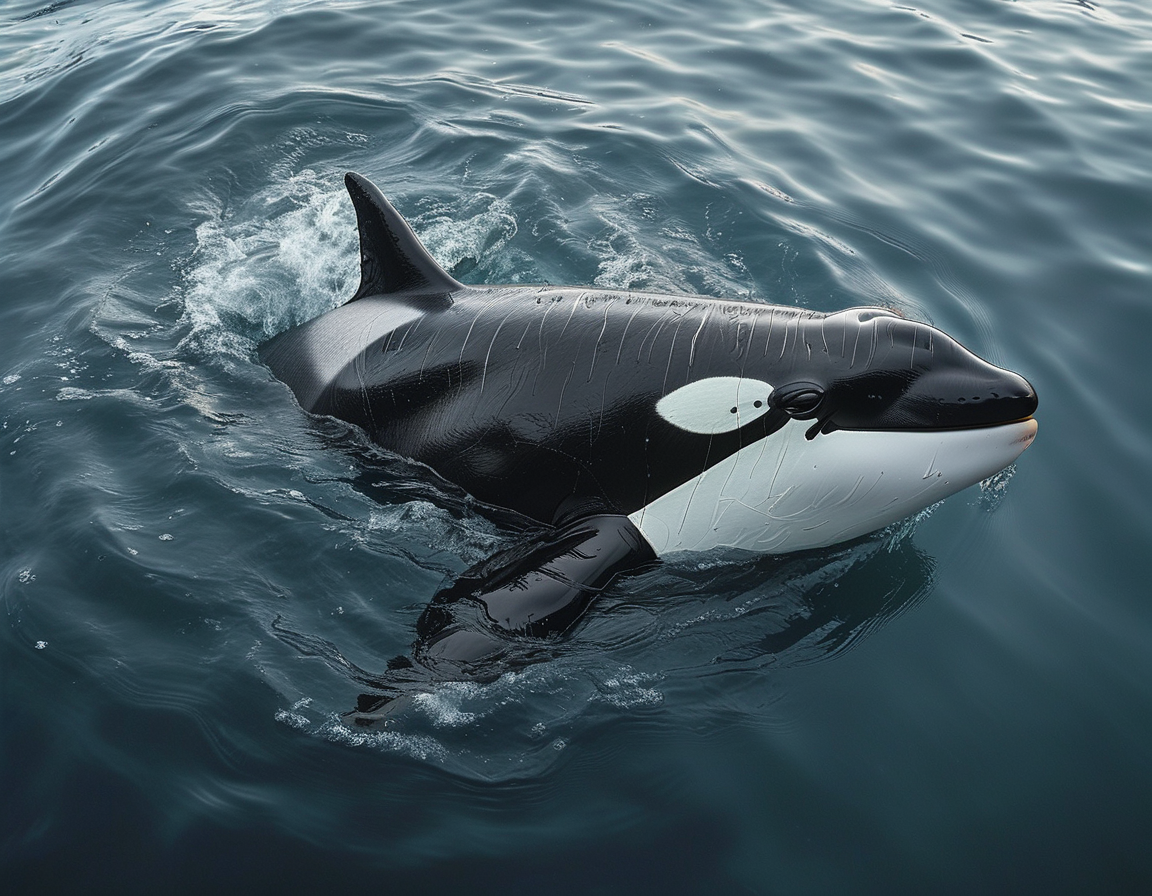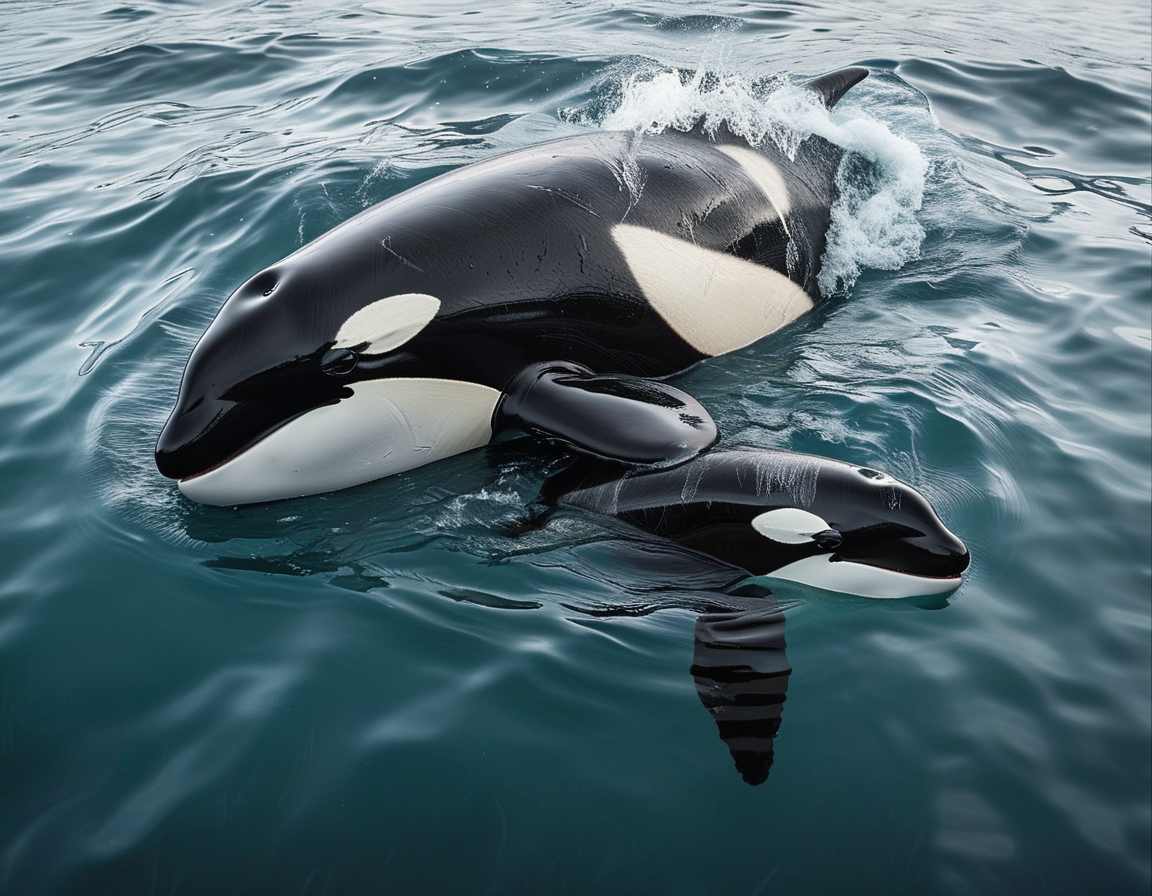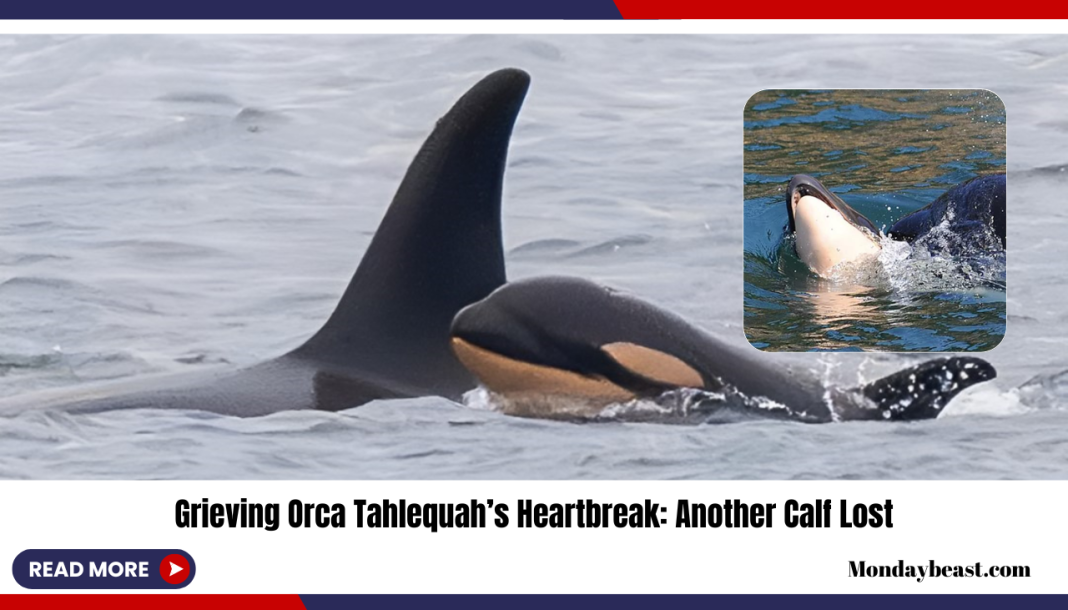In a heart-wrenching twist of fate, the killer whale Tahlequah, known scientifically as J35, has been spotted once again carrying the lifeless body of her newborn calf in the waters of Puget Sound. This follows a devastating loss that has left experts reeling. After swimming over 1,000 miles while mourning her first dead calf in 2018, her ongoing journey reflects not just personal grief but a broader ecological crisis.

The southern resident killer whale population is in dire straits. Once numbering in the hundreds, the current population stands at a shocking 73, with just 23 breeding females. The loss of each calf is monumental, and Tahlequah’s story resonates deeply with those invested in wildlife conservation. Can we truly comprehend the emotional toll behind the statistics? It’s easy to dismiss these numbers as mere figures, but each represents a unique life full of potential, now extinguished.
Hearing about Tahlequah feels almost surreal. A mother struggling against all odds, she has already experienced unimaginable loss. Her first calf was born alive 14 years ago, but now, two of her four documented calves are dead. The more I read about her plight, the more empathy I feel. How must she navigate her world knowing her family is dwindling?

When experts initially spotted Tahlequah’s latest calf, J61, they held a flicker of hope. They knew the challenges newborns face. High mortality rates haunt the early days of life for these creatures. Yet, optimism can feel so fleeting. Losing J61 has left researchers and advocates “deeply saddened.” Their emotional response is telling; it’s about more than the loss of another individual. It’s a reflection of the fragility of an entire population.
The Center for Whale Research spoke candidly about the implications of losing a female calf. J61 had the potential to one day lead her own matriline, contributing to a dwindling gene pool. The death of Tahlequah’s calves is not merely a personal tragedy; it echoes a systemic failure. What needs to change for these majestic beings to thrive again?

Against this backdrop of despair, a glimmer of hope emerged. The discovery of a new calf, J62, sparked a day filled with extremes—joy but largely overshadowed by sorrow. Such moments raise questions about resilience and survival. Can one new life offset the losses felt throughout the community? How do we reconcile hope and heartbreak in conservation?
The situation of the southern resident killer whales has become a rallying cry for conservationists. Calls for emergency legal protections have grown louder. But will they be effective? The powers invoked to protect species on the brink are powerful yet rarely utilized. The greater sage-grouse and western chorus frog were saved through such measures, but can the same be done for these iconic orcas?
As awareness spreads, it’s crucial for each of us to acknowledge our part. Environmental activism varies from striking marches to simple changes in our daily routines. How can every individual contribute? Perhaps it begins with education—understanding the delicate balance of ecosystems wherein whales play a pivotal role.
Just reflecting on this situation leaves me questioning, what does the future hold for the southern resident killer whales? Each time I hear of another calf lost, I feel a sense of urgency. These orcas are not mere symbols but startling reminders of the fragility of life. Their struggle serves as a poignant appeal for immediate action.
The harsh truth remains that the southern resident killer whales are facing an uphill battle. The odds seem stacked against them. Yet, stories like those of Tahlequah motivate us to act. What kind of legacy do we want to leave behind? Let’s choose one that honors our natural world.




